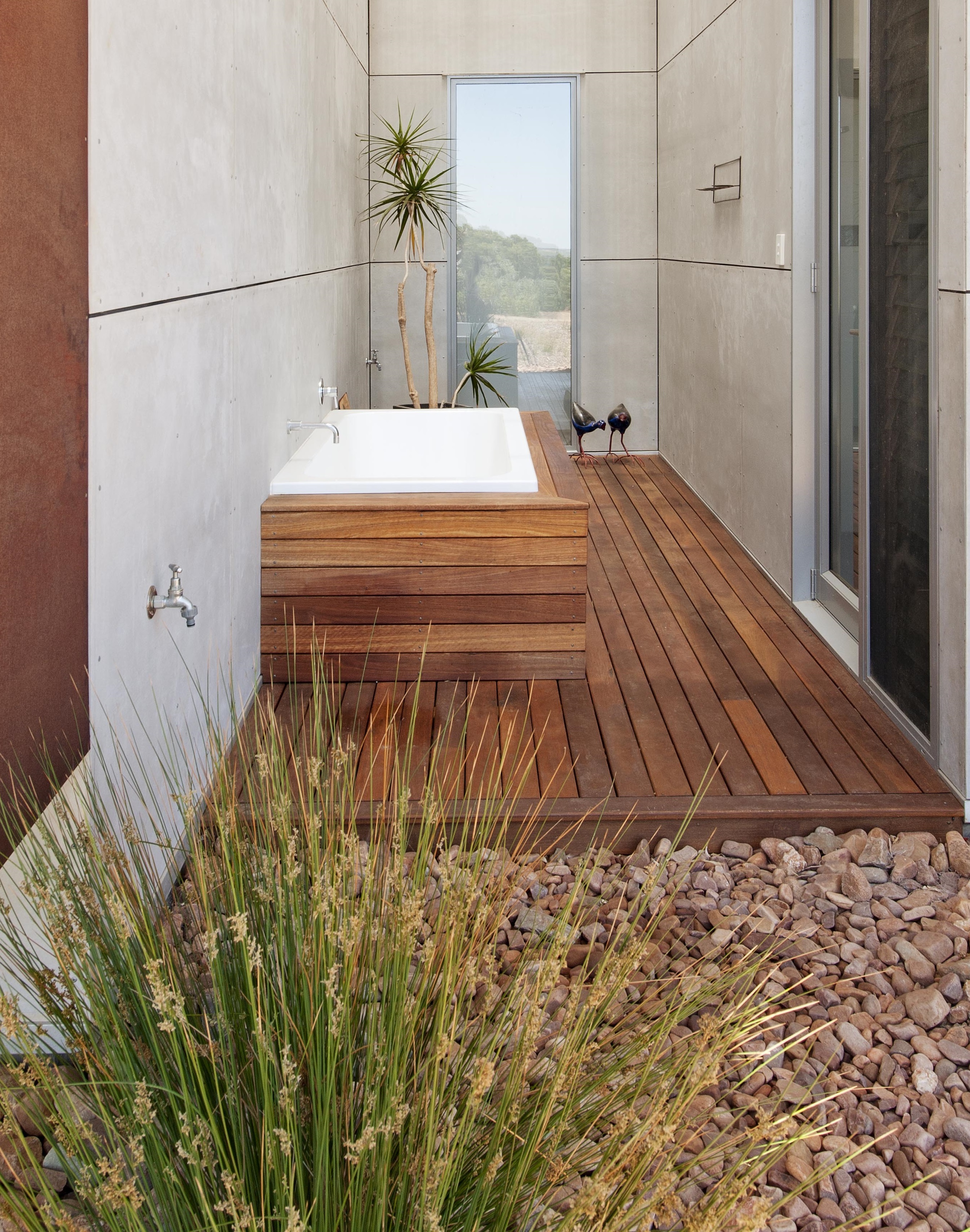Creating a beautiful garden on the coast can be a challenge. Follow these 7 steps to make your neighbours jealous of your new lush coastal garden.

Whether you’re starting from scratch, undertaking a complete overhaul, or revamping a small section of your coastal garden (within 5 kilometres of the coast), we’ve got you covered.
Discover how to make the process smoother and the results more than just satisfactory, with these 7 steps:
1. Select and sketch the site outline
If it’s not your whole yard, the first step is working out what areas you’d like to transform.
Keep in mind that you don’t need to do the whole garden at once. Sometimes starting small makes the job feel easier.
Download this graph paper and measure your area. Then sketch the outline of the area to transform.
Be sure to include your house, with any windows and doors, your fence, footpath, road, and any features that you expect to keep in your garden – like a big tree.
At this stage your sketch will be looking pretty empty – that’s fine, you’ll be adding to it as you go.
2. Incorporate the local environment
By considering what’s around your home – not just in your yard – you’ll set yourself up for success. Everyone has different elements to take into account. Here’s a few to consider and what they might mean for you:
- Noise – do you want to block out noisy neighbours with dense plants?
- Drainage – both good and poor drainage impact your plant options.
- Sea breeze – love it or want to be shielded from it?
- Shade – take advantage of it with a spot to sit or just be mindful of the plants that like shade.
- Soil type – do you need to improve existing or bring in new soil? Start by finding out what soil you’re working with.
- Views – got a great view you want to keep?
- Local wildlife – what animals live locally? Can you help provide food and shelter for them?
Make a list of everything that might impact your plan going forward. You can also use the initial sketch of your garden to add in any notes about things you want to keep in mind.

3. Choose and add features
There are lot of things you could include. What most takes your fancy?
Do you want to grow your own food? Attract butterflies or native bees? What about screening? Will there be a pond or rain garden? Maybe you want to bathe with a view?
Head to page 6 of our coastal garden design guide for inspiration – or just let your imagination run wild!

Once you’ve picked some features, go back to the graph paper and sketch them in – keep in mind your design doesn’t need to be a work of art.
Walking through your site might help determine where things could go. Connectivity is important so consider how you will get between areas in the garden, or how access will be maintained to features that you’ll want to get to regularly e.g. a veggie patch.
4. Pick your plants
It’s a good idea to decide how big both the plants can be and how big you want them to get, before you even pick the species. No matter how much you love a plant, if the space you’ve got isn’t big enough, you’re setting yourself up for failure.
Use the graph paper to sketch ideal plant sizes, to get an idea of how they’ll work together.
Then, create a list of plant features and types, that will fit in the available space. For example, are you looking for a groundcover or a tree? That’s a big difference! Other things like, ‘needs to tolerate shade’, are important to consider too, and this is where you can make a wish list for attracting birds, butterflies and other wildlife.
Jot all these things down on a shopping list (there’s one ready for you on page 21 of the guide) and start matching them up with plants that offer them. For example, if you’re looking for a feature tree that grows to 3–5 metres, silver banksia might be a good pick.
The best option for your coastal garden is local native plants. These will tolerate the conditions better, saving you time and money. You can find lots of inspiration in our coastal gardens planting guide.

5. Create a to-do list
While you could wing it (and hey, we know that’s how some people roll), an action plan generally leads to greater success. Consider putting down a prioritised to-do list, to keep you on track.
Head to pages 22–24 in the design guide for an example action plan with lots of prompts to get you thinking.
6. Use sustainable garden materials
Gardening is a great way to help your local environment but not all landscaping materials are created equal. Here’s a few questions to ask suppliers before buying:
- How was it sourced?
- Is there a local alternative?
- Is there a recycled option?
Read our blog about sustainable gardening options and information.
7. Build your coastal garden
And now the fun part! Put your plan into action and create the garden you’ve been working on.
Sticking to your design is the best way to ensure you don’t make costly mistakes (like planting or building something in the wrong spot).
If you get stuck along the way, refer to the steps in our design guide.

Need more info?
For a more in depth look at these steps, download our Coastal gardens design guide booklet and the accompanying graph paper to make your life easier!
Just starting on your gardening journey? Be inspired by our hub of ideas and information.